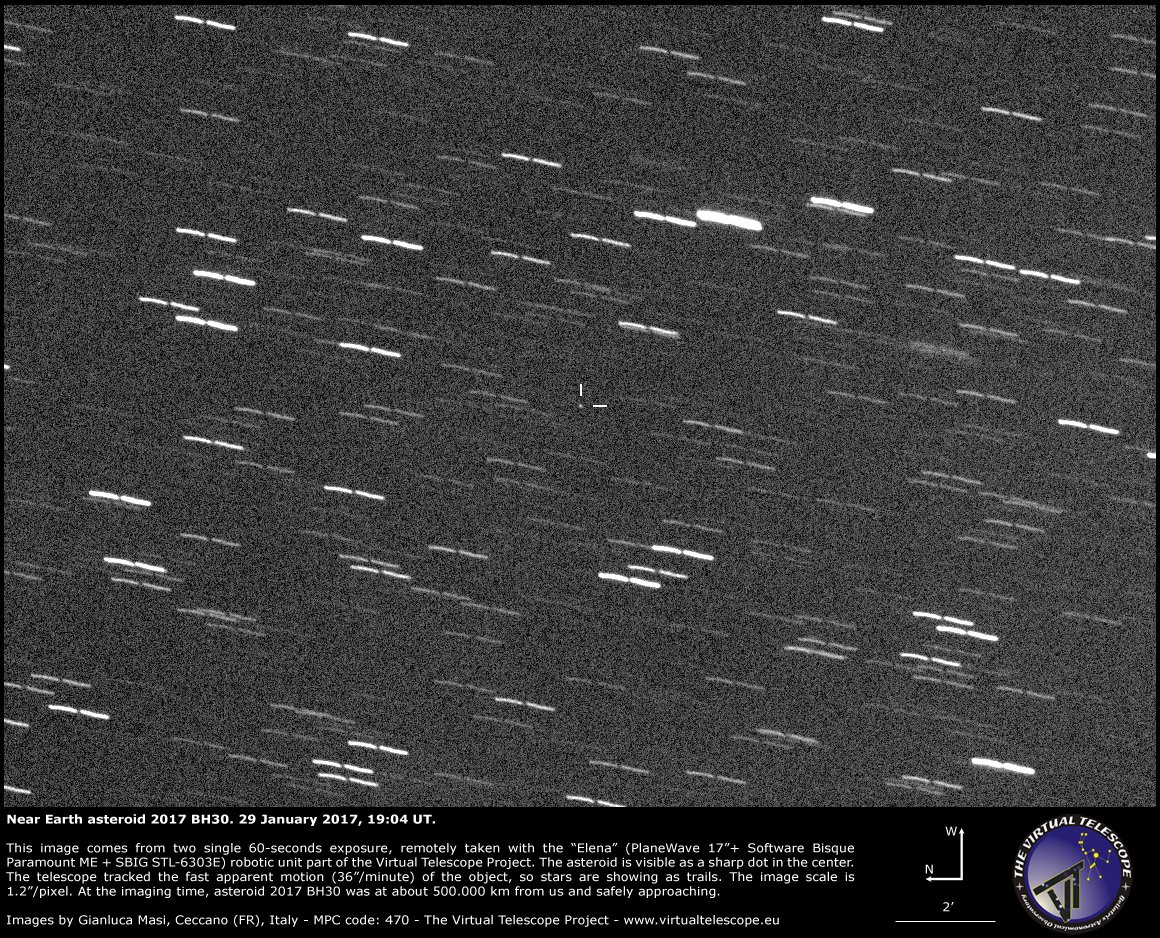http://www.imo.net/doomsday-asteroid-is-not-to-come-in-february-2017/
The news is slowly widespreading over the Internet… According to the DailyMail online, a “self-proclaimed astronomer”,
Dr Dyomin Damir Zakharovich, predicts that an asteroid will crash on the Earth on February 16th, 2017, creating a mega-tsunami…
The asteroid is known: 2016 WF9, an Apollo-type asteroid, was discovered by NEOWISE (Near Earth Object Wide field Infrared Survey Explorer) on November
27th, 2016, and its size is currently estimated to be around 400 m diameter. It will cross the ecliptic plane in mid-February, but according to modelizations,
based on 61 past observations of the small body, it will be 53 millions of kilometers from our planet on February 16th… and will actually at its closest point to
the Earth 9 days later, on February 25th, but always at a respectful distance of more than 51 millions of kilometers. So be sure everybody will be safe on
February 16th! Or at least, if anything happens, it won’t have anything to do with asteroids! Or at least, not this one!
